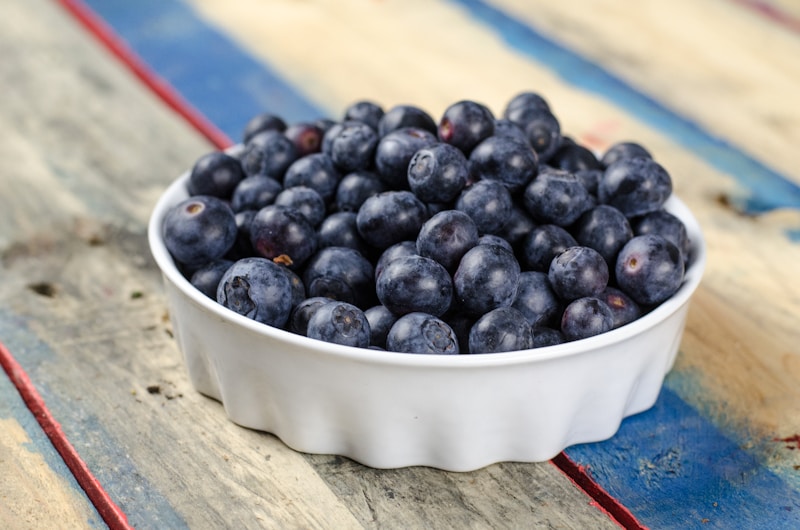9 Questions
What is the primary difference between macronutrients and micronutrients?
Macronutrients are substances required by an organism in larger amounts, while micronutrients are required in trace amounts
What was the first vitamin to be identified?
Thiamine
What is the process by which organisms use food to support their life?
Nutrition
What is the difference between heterotrophs and autotrophs?
Heterotrophs obtain nutrients through consuming other organisms, while autotrophs obtain nutrients through photosynthesis
What is the process of seeking out nutrients in the environment called?
Foraging
What is malnutrition?
Nutrient deficiencies that occur when an organism does not have the nutrients that it needs
What is the primary method by which fungi obtain nutrients?
Absorbing matter through the root-like mycelium
What is the difference between lithotrophic and phototrophic prokaryotes?
Lithotrophic prokaryotes break down inorganic matter, while phototrophic prokaryotes engage in photosynthesis to obtain energy from sunlight
What is the difference between mixotrophic and parasitic protists?
Mixotrophic protists depend on one source of nutrients while using the other as a supplemental source, while parasitic protists use a flagellum to hunt for food
Study Notes
Provision of Nutrients to Cells and Organisms
-
Nutrition is the process by which organisms use food to support their life, providing them with nutrients for energy and chemical structures.
-
Organisms obtain nutrients by consuming organic matter, inorganic matter, absorbing light, or a combination of these, and all forms of life require carbon, energy, water, and various other molecules.
-
Nutritional science began in the 1910s, and the first vitamin to be identified was thiamine in 1926, with the first recommended dietary allowances being developed during the Great Depression and World War II.
-
Nutrients are substances that provide energy and physical components to the organism, and they can be basic elements or complex macromolecules.
-
Macronutrients are the primary substances required by an organism, and micronutrients are substances required by an organism in trace amounts.
-
Nutrients are absorbed by the cells and used in metabolic biochemical reactions, including fueling, biosynthetic, polymerizations, and assembly reactions.
-
Organisms can be classified by how they obtain carbon and energy, such as heterotrophs, autotrophs, mixotrophs, phototrophs, chemotrophs, organotrophs, lithotrophs, prototrophs, and auxotrophs.
-
The diet of an organism is the sum of foods it eats, and a nutrient cycle is a biogeochemical cycle involving the movement of inorganic matter through soil, organisms, air or water.
-
Foraging is the process of seeking out nutrients in the environment, and organisms can detect nutrients through taste or other forms of nutrient sensing.
-
Nutrient deficiencies, known as malnutrition, occur when an organism does not have the nutrients that it needs, leading to wasting in acute cases and stunting of marasmus in chronic cases of malnutrition.
-
Animals are heterotrophs that consume other organisms to obtain nutrients, while plants obtain nutrients through inorganic substances absorbed from the soil or the atmosphere.
-
Fungi are chemoheterotrophs that consume external matter for energy, and most fungi absorb matter through the root-like mycelium.
-
Protists include all eukaryotes that are not animals, plants, or fungi, and they are diverse in their nutritional needs.Nutrient Acquisition in Prokaryotes and Protists
-
Protists and prokaryotes have different methods of obtaining nutrients.
-
Protists can be flagellate, parasitic, or mixotrophic in their approach to obtaining nutrients.
-
Flagellate protozoa use a flagellum to hunt for food, and some protozoa act as parasites.
-
Mixotrophic protists depend on one source of nutrients while using the other as a supplemental source.
-
Prokaryotes, including bacteria and archaea, have different methods of obtaining nutrients across nutritional groups.
-
Prokaryotes can only transport soluble compounds across their cell envelopes, but they can break down chemical components around them.
-
Lithotrophic prokaryotes can survive in nutrient-deprived environments by breaking down inorganic matter.
-
Phototrophic prokaryotes, such as cyanobacteria and Chloroflexia, engage in photosynthesis to obtain energy from sunlight.
-
Some prokaryotes, such as Bdellovibrio and Ensifer, are predatory and feed on other single-celled organisms.
-
Predatory prokaryotes seek out other organisms through chemotaxis or random collision, degrade it, and absorb the released nutrients.
-
Predatory strategies of prokaryotes include attaching to the outer surface of the organism and degrading it externally, entering the cytoplasm of the organism, or entering the periplasmic space of the organism.
-
Groups of predatory prokaryotes may forgo attachment by collectively producing hydrolytic enzymes.
Test your knowledge on the provision of nutrients to cells and organisms with this informative quiz! From the basics of nutrition to the different methods of nutrient acquisition in prokaryotes and protists, this quiz will challenge and expand your understanding of how organisms obtain the energy and physical components they need to survive. Keywords for this quiz include nutrition, macronutrients, micronutrients, nutrient cycle, malnutrition, heterotrophs, autotrophs, mixotrophs, phototroph
Make Your Own Quizzes and Flashcards
Convert your notes into interactive study material.





